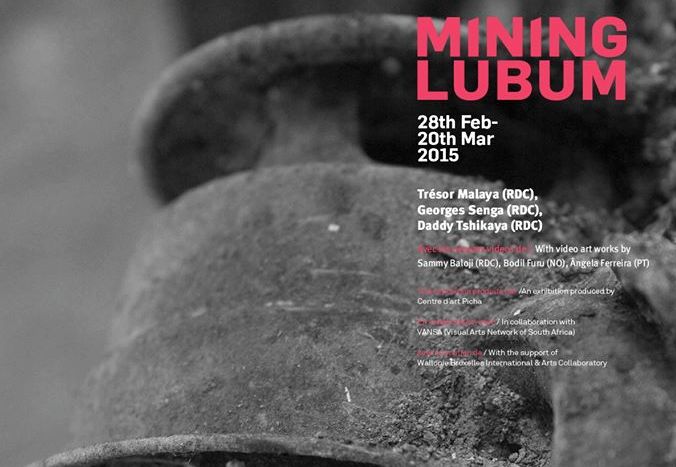VANSA - King Kong Building 1st floor , Johannesburg, South Africa
28 Feb 2015 - 20 Mar 2015

The exhibition title is taken from the project ‘Mining the museum’ by the African American artist Fred Wilson, presented in 1992 at the Maryland Historical Society in which the artist intended to address the issue of colonization, slavery and its abolition by trying to be « suggestive rather than didactic, provocative rather than moralizing », featuring a new angle on museum objects.
However, in this case the title refers not to the museum reality, but to the city of Lubumbashi in the Democratic Republic of Congo, and can be understood also in its first meaning, as a way to explore, excavate the reality of this mining town through the eyes of artists.
Artistic creation is an important part of industrial culture in Lubumbashi. The Génerale des Carrières et des mines (Gecamines) mining company had a monopoly of mining in the area, and built in its social actions several cultural activities. Particularly in the performing arts through the group of acrobats Bana Mampala (‘children of the heap’) and musicians and dancers of ‘brakka’ music named Jecoke. In visual arts, apart from training initiatives, creativity would be found outside the authority of the powerful company, sometimes in a rather critical role, creating correlations between Gecamines as reminiscent of the colonial power. In popular painting in particular, the chimney and the heap symbols (connical mine dump) of this industry, are found behind the scenes of lashes or uprising.
Today, Gecamines as a parastatal is ‘on its knees’, as the saying goes, and it is the private mining companies, often affiliates of multinationals, who manage the mining sector. This economic expansion is done in parallel with a burgeoning contemporary art scene that claims its place on the international scene. As mining products are exported to southern Africa and to the South African ports, so the Lubumbashi art scene opens more exchanges with Johannesburg and southern Africa.
These exchanges show that art also aims to be exported in an exchange that enriches afar so as to enter into a more profound relationship, more respectful, more engaged and, to paraphrase Sony Labou Tansi, more engaging. This is the conviction that carries the collaborative project between Picha art center and Visual Arts Network of South Africa.
The idea behind this exhibition project, realized with the support of Wallonie Bruxelles International on the occasion of the Walloon economic mission to South Africa, is to follow these two dynamics and explore ways to connect.
Apart from Trésor Malaya, Georges Senga and Daddy Tshikaya, artists living in Lubumbashi, three other contemporary artists who have recently worked there have agreed to provide, through video art, their perception of this reality. Sammy Baloji, Congolese photographer, is the co-founder of Picha. In his video Mémoire, he invites the choreographer Faustin Linyekula on a journey through time and space of the industrial ruin in Lubumbashi. Ângela Ferreira, Mozambican and Portuguese artist, made a sculpture on the roof of a Modernist building in Lubumbashi and invited two singers to perform the song Entrer dans la mine (Entering the mine), a farewell song of a miner to his mother. Bodil Furu, Norwegian filmmaker, presents a docudrama titled Code minier, where the poetry of two congolese writers sings the landscape transformed by industry.